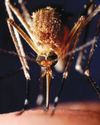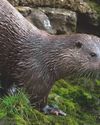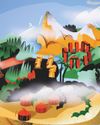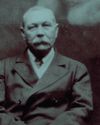Costa Rica is creating a vast network of wildlife corridors to link its isolated reserves. James Lowen asks if this ambitious vision could inspire conservationists beyond Latin America

In a humid rainforest moistened by Pacific currents, Canadian photographer Nick Hawkins sits cross-legged amid tangled vines, his form concealed by a massive tree trunk thrusting skyward. Unseen in the soaring forest canopy, an avian orchestra flutes and frets. Hawkins is entranced by a family of white-nosed coati – bushy-tailed, long-snouted mammals with extravagant white mascara – rootling in leaf litter. “Being in Cabo Blanco Reserve feels like travelling back in time,” he grins. “It hums with natural energy.”
Hawkins spent five months documenting the radical efforts of Costa Rican conservationists to future-proof their protected-areas system against the stresses imposed by a burgeoning human population and changing climate. Their solution? To join the dots of the country’s many reserves using biological corridors.
Revered for its wildlife riches, Costa Rica is one of the world’s top destinations for ecotourism. Bernal Herrera-Fernández, vice-president of the IUCN World Commission on Protected Areas, points out that despite covering barely one-third of 1 per cent of Earth’s landmass, this relatively small Central American state harbours 5 per cent of global biodiversity. An estimated half-a-million species cram into an area just two-thirds the size of Scotland. “Costa Rica also plays a hugely significant role in connecting the flora and fauna of North and South America,” Herrera adds.
BIODIVERSITY HOTSPOT
The diversity of butterflies here is 20 times higher than in Britain, and there are 30 times more reptiles and amphibians. The mammal list edges towards 250 species, and upwards of 600 bird species are resident. It’s no wonder that Costa Rica enjoys a worldwide reputation for its astonishing biodiversity, as well as for setting the pace environmentally – its record puts many wealthier nations to shame.
Esta historia es de la edición September 2017 de BBC Earth.
Comience su prueba gratuita de Magzter GOLD de 7 días para acceder a miles de historias premium seleccionadas y a más de 9,000 revistas y periódicos.
Ya eres suscriptor ? Conectar
Esta historia es de la edición September 2017 de BBC Earth.
Comience su prueba gratuita de Magzter GOLD de 7 días para acceder a miles de historias premium seleccionadas y a más de 9,000 revistas y periódicos.
Ya eres suscriptor? Conectar

World's First Malaria Vaccine
The World Health Organization’s director-general hails ‘historic moment’ as mass immunisation of African children begins

Is River Pollution Putting The Species In Jeopardy Again?
Ten years ago, it was jubilantly announced that o ers had returned to every county in England. But is river pollution putting the species in jeopardy again?

The Big Burnout
Long hours, low pay and a lack of appreciation — among other things — can make for a stressful workplace and lead to burnout. It’s something we should all be concerned about, because over half of the workforce reports feeling it

Putting Nature To Rights
More countries are enshrining the right to a clean environment into law. So if a company or government is impinging upon that right, you could take them to court

Mega Spaceship: Is It Possible For China To Build A Kilometre-Long Spacecraft?
Buoyed on by its successful Moon missions, China has launched a five-year study to investigate the possibility of building the biggest-ever spacecraft

Are We Getting Happier?
Enjoying more good days than bad? Feel like that bounce in your step’s getting bigger? HELEN RUSSELL looks into whether we’re all feeling more cheery…

“Unless the Japanese got the US off their backs in the Pacific, they believed they would face complete destruction”
Eighty years ago Japan’s surprise raid on Pearl Harbor forced the US offthe fence and into the Second World War. Ellie Cawthorne is making a new HistoryExtra podcast series about the attack, and she spoke to Christopher Harding about the long roots of Japan’s disastrous decision

Your Mysterious Brain
Science has mapped the surface of Mars and translated the code for life. By comparison, we know next to nothing about what’s between our ears. Over the next few pages, we ask leading scientists to answer some of the most important questions about our brains…

Why Do We Fall In Love?
Is it companionship, procreation or something more? DR ANNA MACHIN reveals what makes us so willing to become targets for Cupid’s arrow

Detecting the dead
Following personal tragedy, the creator of that most rational of literary figures, Sherlock Holmes, developed an obsession with spiritualism. Fiona Snailham and Anna Maria Barry explore the supernatural interests of Sir Arthur Conan Doyle